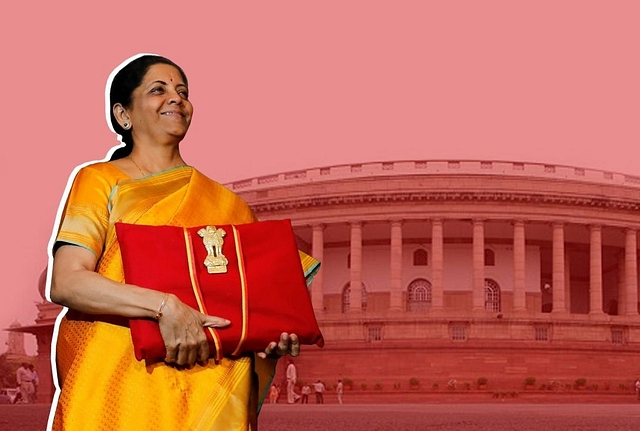
With A Few Tweaks, Finance Minister’s Alternate Tax Regime Is Just What The Doctor Ordered
Nirmala Sitharaman’s new tax regime is a good innovation that only needs some tweaks to fly.
The introduction of the new personal income tax regime with minimal tax deductions, which will run parallel to the existing schema, is the first step towards a simpler and lower income tax regime for everybody.
While many taxpayers may be loath to give up their present favourite tax breaks – paying insurance premia or deductions on home loan interest – the new regime is ideal for the emerging gig economy, where incomes may be lumpy and regular jobs become scarcer. In a gig economy where term contracts may prevail for many jobs, most people cannot expect to have full-time jobs from age 21 to 60. This means a lower tax regime, with breaks for only the most vital investments, will be better.
The new tax regime – which one can choose to use or abandon in any year – has many kinks and oddities, but its chief merit is that it does away with umpteen deductions that were needlessly complicating the tax regime and pushing taxpayers into making illogical investment choices merely to take advantage of a tax break.
Consider the sheer number of salaried employees who buy unit-linked insurance plans and money-back policies purely for the tax breaks when term insurance is much cheaper.
In the new regime, tax rates are significantly lower (about 5 per cent on an average) for incomes upto Rs 15 lakh – in income buckets of Rs 2.5-5 lakh (tax rate: 5 per cent), Rs 5-7.5 lakh (10 per cent), Rs 7.5-10 lakh (15 per cent), Rs 10-12.5 lakh (20 per cent) and Rs 12.5-15 lakh (25 per cent). Above Rs 15 lakh, the rates are 30 per cent.
The deductions gone are section 80 C (provident fund contributions, insurance premia, etc), deductions on house rent allowance, bank interest, medical insurance, etc. The only major tax deduction that remains involves employer contributions to pension schemes (especially the National Pension Scheme, or NPS).
Thanks to this sweeping elimination of deductions, most tax advisers are unenthusiastic about the new tax regime. But while the new scheme would benefit from a few intelligent tweaks, it is broadly in the right direction. It is possible to visualise a merger of the two tax regimes – one without deductions and one with – by the end of Narendra Modi government’s second term.
The question is: what should the ideal tax regime be? And what kind of deductions should remain?
Broadly speaking, the investments or savings that must be encouraged are the following: life cover, health cover, and retirement plans.
To start with the last one first, the logic of excluding provident fund contributions from tax deductions and including NPS is simple: the former comes under the EEE regime – where tax is exempt at all three stages, investment, growth and maturity. NPS, on the other hand, is EET. It is exempt at the investment and growth stages, but taxed when it matures. However, since PF is almost the only long-term savings lower and middle-income employees make till retirement, it does not make sense to eliminate the tax break.
A minimal amount of tax break for term life insurance and health cover is also needed, for without tax breaks, people may simply not invest in these absolutely essential safety nets. Tax breaks for term insurance, the cheapest and best form of life insurance, and minimal health insurance (say, upto Rs 15,000 per annum) would be ideal.
Other things, like deductions for home loan interest payments, etc, are unnecessary. The real thing that needs to be done to make housing affordable is to bring land prices down, and not try to make up for high property prices by offering tax deductions and rate subventions. These tax concessions in fact force people to buy unaffordable homes, when land and building law reforms can easily make homes more affordable.
The other tweak relates to the highest tax brackets, where there are super tax rates for incomes above Rs 50 lakh.
Logically, if one were to eliminate all but three tax breaks (life and health cover and retirement plan contributions), it does not make sense to keep the top tax rates as high as 42 per cent (which includes surcharges).
To put it simply, the new tax regime is directionally correct, and needs tweaking to allow for three deductions and a reduction in the super tax rates. Once these tweaks are done, we should move towards fewer brackets (just three at 5-10-25 per cent), and no super taxes. With the introduction of the long-term capital gains tax and the abolition of the dividend distribution tax, the super tax is becoming superfluous.
Nirmala Sitharaman’s new tax regime is a good innovation that only needs some tweaks to fly.